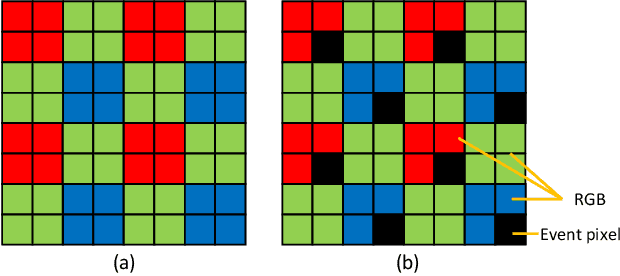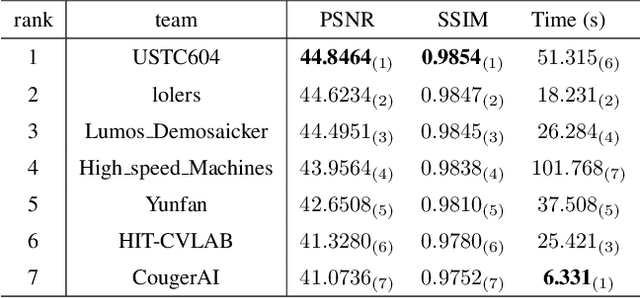Yijie Xu
MathSticks: A Benchmark for Visual Symbolic Compositional Reasoning with Matchstick Puzzles
Oct 01, 2025Abstract:We introduce \textsc{MathSticks}, a benchmark for Visual Symbolic Compositional Reasoning (VSCR), which unifies visual perception, symbolic manipulation, and arithmetic consistency. Each task presents an incorrect matchstick equation that must be corrected by moving one or two sticks under strict conservation rules. The benchmark includes both text-guided and purely visual settings, systematically covering digit scale, move complexity, solution multiplicity, and operator variation, with 1.4M generated instances and a curated test set. Evaluations of 14 vision--language models reveal substantial limitations: closed-source models succeed only on simple cases, open-source models fail in the visual regime, while humans exceed 90\% accuracy. These findings establish \textsc{MathSticks} as a rigorous testbed for advancing compositional reasoning across vision and symbols. Our code and dataset are publicly available at https://github.com/Yuheng2000/MathSticks.
See&Trek: Training-Free Spatial Prompting for Multimodal Large Language Model
Sep 19, 2025Abstract:We introduce SEE&TREK, the first training-free prompting framework tailored to enhance the spatial understanding of Multimodal Large Language Models (MLLMS) under vision-only constraints. While prior efforts have incorporated modalities like depth or point clouds to improve spatial reasoning, purely visualspatial understanding remains underexplored. SEE&TREK addresses this gap by focusing on two core principles: increasing visual diversity and motion reconstruction. For visual diversity, we conduct Maximum Semantic Richness Sampling, which employs an off-the-shell perception model to extract semantically rich keyframes that capture scene structure. For motion reconstruction, we simulate visual trajectories and encode relative spatial positions into keyframes to preserve both spatial relations and temporal coherence. Our method is training&GPU-free, requiring only a single forward pass, and can be seamlessly integrated into existing MLLM'S. Extensive experiments on the VSI-B ENCH and STI-B ENCH show that S EE &T REK consistently boosts various MLLM S performance across diverse spatial reasoning tasks with the most +3.5% improvement, offering a promising path toward stronger spatial intelligence.
VSI: Visual Subtitle Integration for Keyframe Selection to enhance Long Video Understanding
Aug 09, 2025Abstract:Long video understanding presents a significant challenge to multimodal large language models (MLLMs) primarily due to the immense data scale. A critical and widely adopted strategy for making this task computationally tractable is keyframe retrieval, which seeks to identify a sparse set of video frames that are most salient to a given textual query. However, the efficacy of this approach is hindered by weak multimodal alignment between textual queries and visual content and fails to capture the complex temporal semantic information required for precise reasoning. To address this, we propose Visual-Subtitle Integeration(VSI), a multimodal keyframe search method that integrates subtitles, timestamps, and scene boundaries into a unified multimodal search process. The proposed method captures the visual information of video frames as well as the complementary textual information through a dual-stream search mechanism by Video Search Stream as well as Subtitle Match Stream, respectively, and improves the keyframe search accuracy through the interaction of the two search streams. Experimental results show that VSI achieve 40.00% key frame localization accuracy on the text-relevant subset of LongVideoBench and 68.48% accuracy on downstream long Video-QA tasks, surpassing competitive baselines by 20.35% and 15.79%, respectively. Furthermore, on the LongVideoBench, VSI achieved state-of-the-art(SOTA) in medium-to-long video-QA tasks, demonstrating the robustness and generalizability of the proposed multimodal search strategy.
RoboBrain 2.0 Technical Report
Jul 02, 2025Abstract:We introduce RoboBrain 2.0, our latest generation of embodied vision-language foundation models, designed to unify perception, reasoning, and planning for complex embodied tasks in physical environments. It comes in two variants: a lightweight 7B model and a full-scale 32B model, featuring a heterogeneous architecture with a vision encoder and a language model. Despite its compact size, RoboBrain 2.0 achieves strong performance across a wide spectrum of embodied reasoning tasks. On both spatial and temporal benchmarks, the 32B variant achieves leading results, surpassing prior open-source and proprietary models. In particular, it supports key real-world embodied AI capabilities, including spatial understanding (e.g., affordance prediction, spatial referring, trajectory forecasting) and temporal decision-making (e.g., closed-loop interaction, multi-agent long-horizon planning, and scene graph updating). This report details the model architecture, data construction, multi-stage training strategies, infrastructure and practical applications. We hope RoboBrain 2.0 advances embodied AI research and serves as a practical step toward building generalist embodied agents. The code, checkpoint and benchmark are available at https://superrobobrain.github.io.
Logic-in-Frames: Dynamic Keyframe Search via Visual Semantic-Logical Verification for Long Video Understanding
Mar 17, 2025Abstract:Understanding long video content is a complex endeavor that often relies on densely sampled frame captions or end-to-end feature selectors, yet these techniques commonly overlook the logical relationships between textual queries and visual elements. In practice, computational constraints necessitate coarse frame subsampling, a challenge analogous to ``finding a needle in a haystack.'' To address this issue, we introduce a semantics-driven search framework that reformulates keyframe selection under the paradigm of Visual Semantic-Logical Search. Specifically, we systematically define four fundamental logical dependencies: 1) spatial co-occurrence, 2) temporal proximity, 3) attribute dependency, and 4) causal order. These relations dynamically update frame sampling distributions through an iterative refinement process, enabling context-aware identification of semantically critical frames tailored to specific query requirements. Our method establishes new SOTA performance on the manually annotated benchmark in key-frame selection metrics. Furthermore, when applied to downstream video question-answering tasks, the proposed approach demonstrates the best performance gains over existing methods on LongVideoBench and Video-MME, validating its effectiveness in bridging the logical gap between textual queries and visual-temporal reasoning. The code will be publicly available.
Mark Your LLM: Detecting the Misuse of Open-Source Large Language Models via Watermarking
Mar 06, 2025Abstract:As open-source large language models (LLMs) like Llama3 become more capable, it is crucial to develop watermarking techniques to detect their potential misuse. Existing watermarking methods either add watermarks during LLM inference, which is unsuitable for open-source LLMs, or primarily target classification LLMs rather than recent generative LLMs. Adapting these watermarks to open-source LLMs for misuse detection remains an open challenge. This work defines two misuse scenarios for open-source LLMs: intellectual property (IP) violation and LLM Usage Violation. Then, we explore the application of inference-time watermark distillation and backdoor watermarking in these contexts. We propose comprehensive evaluation methods to assess the impact of various real-world further fine-tuning scenarios on watermarks and the effect of these watermarks on LLM performance. Our experiments reveal that backdoor watermarking could effectively detect IP Violation, while inference-time watermark distillation is applicable in both scenarios but less robust to further fine-tuning and has a more significant impact on LLM performance compared to backdoor watermarking. Exploring more advanced watermarking methods for open-source LLMs to detect their misuse should be an important future direction.
SePer: Measure Retrieval Utility Through The Lens Of Semantic Perplexity Reduction
Mar 05, 2025



Abstract:Large Language Models (LLMs) have demonstrated improved generation performance by incorporating externally retrieved knowledge, a process known as retrieval-augmented generation (RAG). Despite the potential of this approach, existing studies evaluate RAG effectiveness by 1) assessing retrieval and generation components jointly, which obscures retrieval's distinct contribution, or 2) examining retrievers using traditional metrics such as NDCG, which creates a gap in understanding retrieval's true utility in the overall generation process. To address the above limitations, in this work, we introduce an automatic evaluation method that measures retrieval quality through the lens of information gain within the RAG framework. Specifically, we propose Semantic Perplexity (SePer), a metric that captures the LLM's internal belief about the correctness of the retrieved information. We quantify the utility of retrieval by the extent to which it reduces semantic perplexity post-retrieval. Extensive experiments demonstrate that SePer not only aligns closely with human preferences but also offers a more precise and efficient evaluation of retrieval utility across diverse RAG scenarios.
SpGesture: Source-Free Domain-adaptive sEMG-based Gesture Recognition with Jaccard Attentive Spiking Neural Network
May 23, 2024



Abstract:Surface electromyography (sEMG) based gesture recognition offers a natural and intuitive interaction modality for wearable devices. Despite significant advancements in sEMG-based gesture-recognition models, existing methods often suffer from high computational latency and increased energy consumption. Additionally, the inherent instability of sEMG signals, combined with their sensitivity to distribution shifts in real-world settings, compromises model robustness. To tackle these challenges, we propose a novel SpGesture framework based on Spiking Neural Networks, which possesses several unique merits compared with existing methods: (1) Robustness: By utilizing membrane potential as a memory list, we pioneer the introduction of Source-Free Domain Adaptation into SNN for the first time. This enables SpGesture to mitigate the accuracy degradation caused by distribution shifts. (2) High Accuracy: With a novel Spiking Jaccard Attention, SpGesture enhances the SNNs' ability to represent sEMG features, leading to a notable rise in system accuracy. To validate SpGesture's performance, we collected a new sEMG gesture dataset which has different forearm postures, where SpGesture achieved the highest accuracy among the baselines ($89.26\%$). Moreover, the actual deployment on the CPU demonstrated a system latency below 100ms, well within real-time requirements. This impressive performance showcases SpGesture's potential to enhance the applicability of sEMG in real-world scenarios. The code is available at https://anonymous.4open.science/r/SpGesture.
MIPI 2024 Challenge on Demosaic for HybridEVS Camera: Methods and Results
May 08, 2024



Abstract:The increasing demand for computational photography and imaging on mobile platforms has led to the widespread development and integration of advanced image sensors with novel algorithms in camera systems. However, the scarcity of high-quality data for research and the rare opportunity for in-depth exchange of views from industry and academia constrain the development of mobile intelligent photography and imaging (MIPI). Building on the achievements of the previous MIPI Workshops held at ECCV 2022 and CVPR 2023, we introduce our third MIPI challenge including three tracks focusing on novel image sensors and imaging algorithms. In this paper, we summarize and review the Nighttime Flare Removal track on MIPI 2024. In total, 170 participants were successfully registered, and 14 teams submitted results in the final testing phase. The developed solutions in this challenge achieved state-of-the-art performance on Nighttime Flare Removal. More details of this challenge and the link to the dataset can be found at https://mipi-challenge.org/MIPI2024/.
Event Camera Demosaicing via Swin Transformer and Pixel-focus Loss
Apr 03, 2024Abstract:Recent research has highlighted improvements in high-quality imaging guided by event cameras, with most of these efforts concentrating on the RGB domain. However, these advancements frequently neglect the unique challenges introduced by the inherent flaws in the sensor design of event cameras in the RAW domain. Specifically, this sensor design results in the partial loss of pixel values, posing new challenges for RAW domain processes like demosaicing. The challenge intensifies as most research in the RAW domain is based on the premise that each pixel contains a value, making the straightforward adaptation of these methods to event camera demosaicing problematic. To end this, we present a Swin-Transformer-based backbone and a pixel-focus loss function for demosaicing with missing pixel values in RAW domain processing. Our core motivation is to refine a general and widely applicable foundational model from the RGB domain for RAW domain processing, thereby broadening the model's applicability within the entire imaging process. Our method harnesses multi-scale processing and space-to-depth techniques to ensure efficiency and reduce computing complexity. We also proposed the Pixel-focus Loss function for network fine-tuning to improve network convergence based on our discovery of a long-tailed distribution in training loss. Our method has undergone validation on the MIPI Demosaic Challenge dataset, with subsequent analytical experimentation confirming its efficacy. All code and trained models are released here: https://github.com/yunfanLu/ev-demosaic
 Add to Chrome
Add to Chrome Add to Firefox
Add to Firefox Add to Edge
Add to Edge